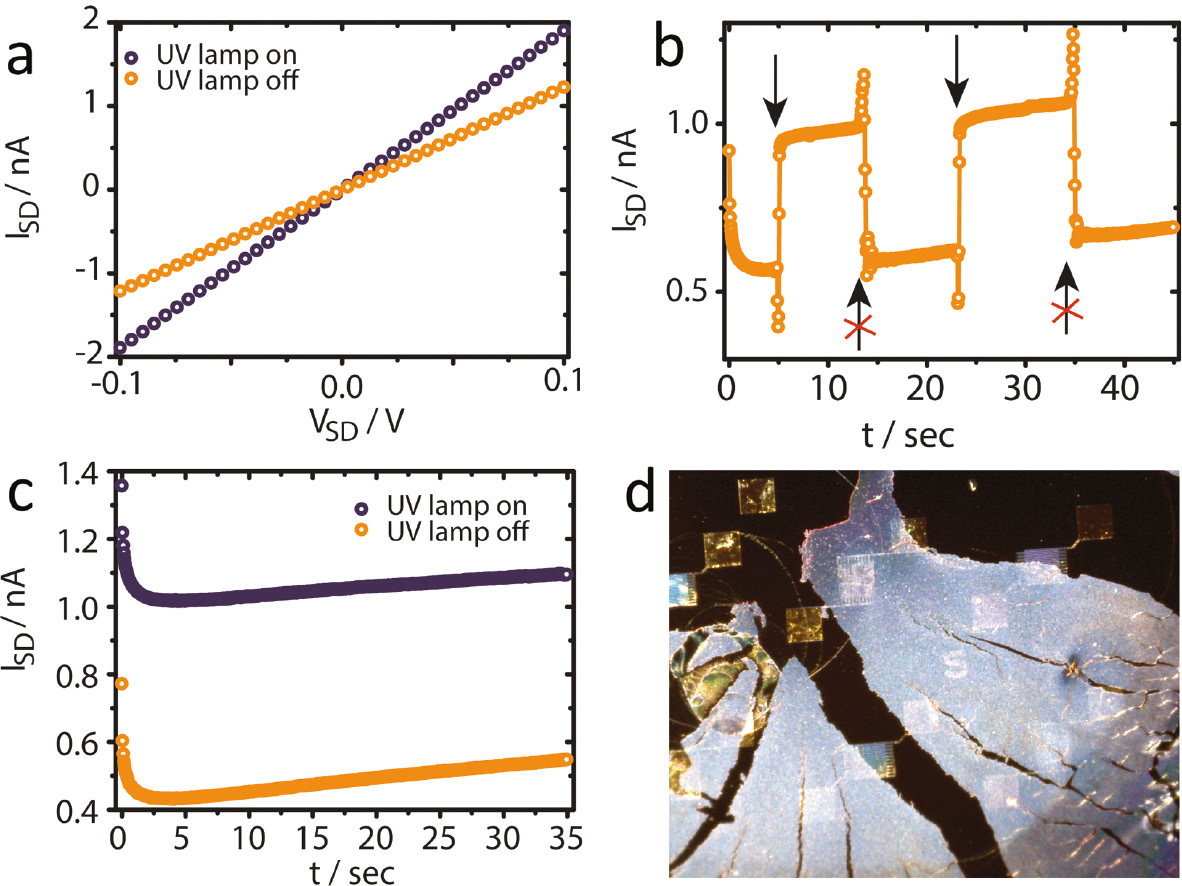We use the photochromic organic semiconductor 1,2-Bis(5′-carboxy-2′-methylthien-3′-yl)-cyclopentene (DTCP) to cross-link PbS quantum dots assembled into thin films. The ligand exchange is monitored by means of vibrational spectroscopy (FT-IR) and core-level X-ray photoemission spectroscopy (XPS). Transport measurements in a field-effect transistor (FET) set-up reveal ambipolar behavior with hole and electron mobilities on the order of 10−4 cm2/Vs and 10−5 cm2/Vs, respectively. Exposure to UV light from a 4 W UV lamp does not significantly change the transport properties, indicating that switching of DTCP is hindered in the hybrid film. We find a pronounced photo-conductance with rapid and reversible photo-response on the order of few seconds, which we attribute to (de-)filling of QD trap states. Our results indicate that hybrid, nanostructured networks of PbS QDs cross-linked with DTCP can be obtained by the presented procedure but that switching of the QD-bound DTCP appears to be hindered compared to the pure, unbound molecular species. We discuss future means to address this problem.

We use the photochromic organic semiconductor 1,2-Bis(5′-carboxy-2′-methylthien-3′-yl)-cyclopentene (DTCP) to cross-link PbS quantum dots assembled into thin films. The ligand exchange is monitored by means of vibrational spectroscopy (FT-IR) and core-level X-ray photoemission spectroscopy (XPS). Transport measurements in a field-effect transistor (FET) set-up reveal ambipolar behavior with hole and electron mobilities on the order of 10−4 cm2/Vs and 10−5 cm2/Vs, respectively. Exposure to UV light from a 4 W UV lamp does not significantly change the transport properties, indicating that switching of DTCP is hindered in the hybrid film. We find a pronounced photo-conductance with rapid and reversible photo-response on the order of few seconds, which we attribute to (de-)filling of QD trap states. Our results indicate that hybrid, nanostructured networks of PbS QDs cross-linked with DTCP can be obtained by the presented procedure but that switching of the QD-bound DTCP appears to be hindered compared to the pure, unbound molecular species. We discuss future means to address this problem.
